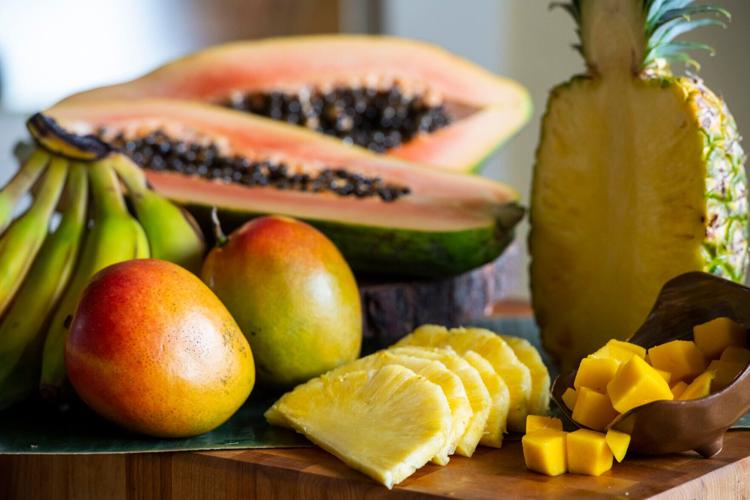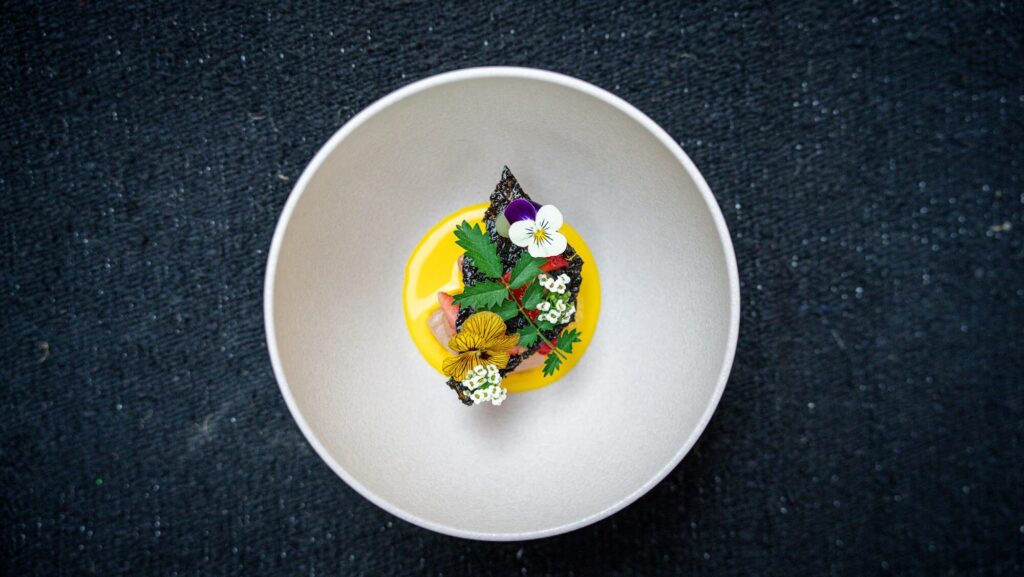Colorado Springs learns tips for selecting and using tropical fruits
Exotic fruits like pineapples, mangoes, papayas, apple bananas, passion fruit, guava and lychee were once thought of as treats reserved for visitors to the countries they’re grown in. Now they’re available almost year-round in grocery stores or Asian markets. But while some are likely familiar, others may leave you scratching your head. What do they taste like? How do I know if they’re ripe? How do I serve them?
To learn more about these exotic fruits, we turned to Joan Namkoong, a former food editor who lives on Oahu. She says that much of Hawaii’s “amazing fruit” doesn’t make it out of the state – many of the tropical fruits found in stores on the US mainland are grown south of the border.
Namkoong highlighted seven of her favorite exotic fruits found in stores around the country and offered some tips:
• Mangoes.
Different varieties are prized for different applications, she said. For example, Chinese and common mangoes are especially good for making chutneys.
How to choose: “The best way to enjoy a mango is at peak ripeness and out of hand,” she said. “They are ready to eat when they give a little to the touch.”
Preparation: “If you look at a mango, you can see it’s kind of oval — the ‘flat’ sides run parallel to the flat seed inside,” she said. “If you cut the flat side against the seed, you come up with two perfect halves, then you trim what’s left on the seed.”
Uses: Ripe mangoes can be used in tarts and in Thai sticky rice, or wrapped with prosciutto. There excellent in smoothies.
• Papayas.
Papayas are a great source of vitamin C.
How to choose: Papayas should give a little to the touch but still be firm. The golden orange color is also an indication of ripeness.
Preparation: Cut off the stem end, then cut the fruit in half lengthwise, scoop out the seeds and serve with a squeeze of lemon or lime.
Uses: Great with a scoop of cottage cheese or yogurt. The seeds can be used in a simple vinaigrette and have a peppery flavor.
• Apple bananas.
This is a local favorite in Oahu, she said. “They are a short, squat banana, maybe 4 to 6 inches long with a tart but sweet flavor” — much different from the typical bananas you find in stores.
How to choose: Apple bananas are firm and stay that way for several days after reaching peak ripeness.
Uses: They are used in desserts, smoothies and sliced to enjoy as a cereal topping.
• Pineapples.
Dole is probably the most familiar brand name when it comes to pineapple, and the company’s pineapple plantation is on Oahu. It got its start in 1851, according to William Goldfield, director of corporate communications for Dole Food Co. “We grow the Royal Hawaiian Tropical Gold pineapples. Most of this fruit is sold in Hawaii. The pineapples found in most grocery stores is imported from Costa Rica.”
How to choose: “Varieties like the Maui Gold are especially known for their sweetness,” Namkoong said. “White pineapples are sought after for their firm texture, sweetness and really delicious flavor.”
In the states, the Smooth Cayenne pineapple is a popular variety.
Preparation: To cut a pineapple, remove the crown and stem ends, then cut vertically along the outer surface, removing the skin.
“You do have to cut fairly deep to remove the eyes along the outer surface,” Namkoong said. “Then cut vertically into spears or horizontally into rings.”
Uses: In salads, smoothies and salsas, and grilled for a delicious side for meat dishes, especially pork.
• Passion fruit.
“The passion fruit is loved for its deep tartness and exotic flavor,” she said. “It’s really not grown on a large scale but is usually available at farmers markets.”
How to choose: Select fruits that are plump, have a slight give and are fully colored, either dark purple, dark yellow, orange or red. Slightly wrinkled fruits are super ripe and will have a sweeter taste than smooth skinned fruits.
Preparation: “To eat one, you cut it in half along its equator and scoop out the seedy pulp and enjoy,” Namkoong said.
Uses: To use, strain out the seeds and use the pulp.
“It is especially wonderful substituted for lemon in tarts and curd,” Namkoong said. “Or use to make a fruit butter, salsa or salad dressing.”
• Guava.
“Another non-commercially grown fruit, guava has a wonderful exotic flavor that is especially loved in jams and jellies, pies and tarts,” she said. “The skin and pulp are edible.”
How to choose: “Gently press the fully sized guava fruit; if you feel that the fruit is soft, it is an indication that the fruit is fully ripe,” she said. “It will have a pleasant aroma that smells like a hybrid between pear and strawberry.”
Preparation: A fully ripe guava is entirely edible, from the skin to the seeds.
Uses: Juiced, poached or mixed into mashed sweet potatoes.
• Lychee.
“Summer is the season for lychee,” she said. “It’s unique in appearance and flavor. It is also known as ‘alligator strawberry’ for its red, bumpy skin. Their opaque white flesh is fragrant and sweet, with floral notes.”
How to choose: Select fruit that is larger than an inch in diameter with bright red skin. Gently press on the skin with your thumb — it should feel a little bouncy.
Preparation: “Lychee fruit can be eaten on its own,” Zamkoong said. “Or peel it to reveal a white flesh and brown seed. Remove the seed and add the flesh to a fruit salad or green salad for a burst of juicy sweetness.”
Uses: Boil with sugar and water to create a simple syrup for cocktails (like a martini), ice cream, sorbet, and sweet summer tea.
Contact the writer: 636-0271.
contact the writer: 636-0271.




















